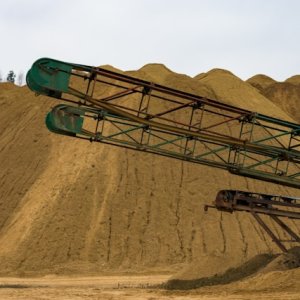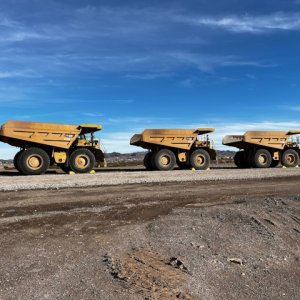Ensuring Safe and Stable Mining Facilities

STORY INLINE POST
Q: What are Newmont’s standards for engineering, construction and operations, and what technical guidance ensure safe tailing facilities?
A: Newmont’s engineering, construction and operating standards and technical guidance explicitly cover tailings management and establish requirements to ensure safe and stable facilities throughout their operating and post-mine closure life. Our approach covers standards, guidelines and governance; reviews, inspections, audits and reporting; emergency response, planning and communications.
Governance is required at all levels of the organization to support our overall approach. In all phases of the life cycle, facilities are inspected at multiple levels – site, regional, corporate and external. The design, construction and operation of our tailings facilities are scrutinized through our Investment System process, supported by inspections and audits; critical controls and critical control reporting; as well as annual inspections by our Engineers of Record.
As an additional layer of assurance, we have implemented Independent Tailings Review Boards at most of our operating sites and projects comprised of two to four subject matter experts in the areas of geotechnical engineering, supplemented by hydrogeological, hydrological and/or seismological, depending on the project.
Newmont has both operational (active and inactive) and closed tailings facilities in a variety of climatic and topographic settings. We conduct extensive siting, engineering, environmental and social studies to support the specific selection and design of each facility. Annually, Newmont safely manages and disposes of more than 100 million tons of tailings that are placed within engineered, surface containment facilities, which are used to backfill former mining pits, or placed as structural backfill paste in underground mines.
Q: How does Newmont go beyond required safety standards?
A: We are in the process of making changes to our tailings management governance programs in order to fully implement the Global Industry Standard on Tailings Management (or GISTM). We believe that this commitment sets us apart from many other companies working in the industry.
The GISTM raises the bar for integrating social, environmental, economic and technical considerations, elevating accountabilities and strengthening oversight and governance. As a member of the International Council on Mining & Metals, Newmont is committed to implementation of the GISTM. We already made many changes throughout 2020 and plan to make more in 2021.
In terms of policy, we have updated our Sustainability and Stakeholder Engagement Policy to include an explicit commitment to implement the GISTM, while achieving the goal of zero-harm to people and the environment. To meet the full set of requirements of the GISTM, we revised our global Tailings Storage Facility and Heap Leach Facility Environmental Management Standard and introduced a new Tailings Storage Facility Technical and Operations Standard that addresses the many technical and governance aspects of tailings management. These Standards are supported by a number of guidance documents.
Our new Tailings Management Governance Framework Guideline aligns with the GISTM and details the roles, responsibilities and accountabilities for tailings management within Newmont. This framework uses a four lines of defense model. The first line of defense is a site-based implementation comprised of our Responsible Tailings Facility Engineer or person and a dedicated Engineer of Record.
The second line of defense is a systematic third-party review process that includes independent tailings review boards for tailings facilities with very high or extreme consequence classifications, or with perceived high risks and senior independent technical review for others, as well as periodic dam safety reviews.
Our third line of defense includes an Accountable Executive (AE), who reports directly to the CEO, and communicates directly with the Board of Directors. This executive is accountable for all of our tailings facilities. In 2020, Dean Gehring, Newmont’s Executive Vice President and CTO, was selected to serve as Newmont’s AE for tailings. The Corporate Tailings Management Team, which I lead as the Senior Director of Global Tailings Management, provides centralized support across Newmont’s portfolio, including inactive and legacy operations. The final line of defense is comprised of Newmont’s Executive Leadership Team that has overall accountability and the Board of Directors that commits to the safe management of Newmont’s TSFs.
My team regularly reports on the status of critical controls, material risks and developments, our alignment to the GISTM, and design and development status, as well as other corporate updates. The company also has a tailings management website to provide an overview of our approach, inventory of tailings facilities and status of implementation of the GISTM.
Q: What are the specific tailings characteristics at Newmont’s Peñasquito mine and how do you guarantee tailings safety?
A: Peñasquito is a world-class operation, and our tailings management team at Peñasquito is truly world class. It is comprised of planning, operations, construction and geotechnical monitoring personnel. The TSF at Peñasquito has a perimeter of 11km. Tailings production is on the order of 120,000 tons per day, resulting in an approximate 5m rate of rise. The paddock-style embankment is constructed on three sides using the centerline method and downstream methodology on the fourth side, adjacent to the internal reclaim pond. Maintaining long beaches adjacent to the centerline raises is among the key success criteria for operations of the facility. Operations are in the process to commissioning an external pond system to further reduce the volume of water stored at the facility. The ultimate design capacity of the facility exceeds 800 million tons.
The TSF is unique in that it is continually built 24 hours a day. We use mine fleet equipment for buttress construction, large haul trucks for sliver fill and smaller dump trucks for rockfill. A cyclone sand zone is also placed in paddocks to form part of the embankment structure.
We recognize that a catastrophic failure within any of our tailings would be considered a significant risk to our business. We perform risk assessments on a TSF-specific basis, considering all phases of the TSF life cycle. As a project or facility matures, the level and detail of the risk assessment must also evolve. Our newly-developed TSF Risk Assessment Guideline ensures we assess our tailings management risks, manage our facilities in a manner commensurate to the risks and make performance-based risk-informed decisions. In December 2019, we brought a multidisciplinary team, including our Engineer of Record at Peñasquito, to perform a risk assessment of the tailings facility and external pond system. Subsequent to that risk assessment, we drilled down into specific failure modes and completed a failure modes and effects analysis. Myself and members of my team had the opportunity to visit Peñasquito in December 2020. During the visit, we reviewed and updated the risk assessment from 2019, as well as our risk management plan. We have a good handle on the risks with our facility, due in part to the depth and breadth of the risk assessments performed, and are actively managing those risks.
Our geotechnical monitoring program for the TSF at Peñasquito includes 177 vibrating wire piezometers, four mechanical inclinometers and two Shape Accel Arrays among other deformation monitoring processes. We also perform a bathymetry of the reclaim pond approximately every month and conduct periodic cone penetration test programs to improve understanding of the in-place tailings characteristics and phreatic conditions.
Q: What are the water savings systems Newmont has in place related to tailings handlings?
A: We have water savings systems at each of our operations. Water management and tailings management truly go hand in hand. At our Musselwhite mine in Ontario, Canada, we employ high-density thickened tailings to develop a nonsegregated tailings stack with minimal bleed water. At Eleonore, in Quebec, we dewater our tailings before placement in a TSF. And, in several operations, we use paste tailings for structural backfill of underground workings.
Q: What technologies does the company apply for monitoring dams around its facilities?
A: Monitoring plans for our tailing facilities are developed on a facility-by-facility basis considering potential failure modes. Typically, we deploy vibrating wire piezometers, standpipe piezometers, drone surveys coupled with survey monuments, InSAR deformation monitoring, bathymetric surveys of reclaim ponds and inclinometers to measure lateral deformation.
In 2020, Newmont commenced deployment of an enterprise approach to drone monitoring of our facilities. We also undertook an internal landscape review of our installed tailings monitoring instrumentation, performed an external landscape review of real-time monitoring platforms and commenced a proof of concept for an enterprise real-time monitoring platform. We are in the final stages of the proof of concept with plans to deploy to all our active operations and select legacy sites in 2021.
We are constantly evaluating additional technologies to improve monitoring, including the use of TDR, fiber optics, and micro-seismic technology. We plan to install TDR on our embankment at Peñasquito in 2021 as a means for direct measurement of deformation.
Newmont is the world’s leading gold company and a producer of copper, silver, zinc and lead. The company’s world-class portfolio of assets, prospects and talent is anchored in favorable mining jurisdictions in North America, South America, Australia and Africa.























